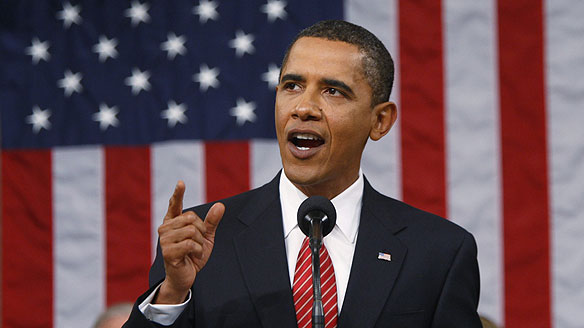Internet innovator Paul Baran dies
 I got this report that Paul Baran, an engineer who helped create the technical underpinnings for the Arpanet, the government-sponsored precursor to today’s Internet, died Saturday night at his home in Palo Alto, Calif. He was 84.
I got this report that Paul Baran, an engineer who helped create the technical underpinnings for the Arpanet, the government-sponsored precursor to today’s Internet, died Saturday night at his home in Palo Alto, Calif. He was 84.
In the early 1960s, while working at the RAND Corporation in Santa Monica, Calif., Mr. Baran outlined the fundamentals for packaging data into discrete bundles, which he called “message blocks.” The bundles are then sent on various paths around a network and reassembled at their destination. Such a plan is known as “packet switching.”
Mr. Baran’s idea was to build a distributed communications network, less vulnerable to attack or disruption than conventional networks. In a series of technical papers published in the 1960s he suggested that networks be designed with redundant routes so that if a particular path failed or was destroyed, messages could still be delivered through another.
Mr. Baran’s invention was so far ahead of its time that in the mid-1960s, when he approached AT&T with the idea to build his proposed network, the company insisted it would not work and refused.
“Paul wasn’t afraid to go in directions counter to what everyone else thought was the right or only thing to do,” said Vinton Cerf, a vice president at Google who was a colleague and long time friend of Mr. Baran’s. “AT&T repeatedly said his idea wouldn’t work, and wouldn’t participate in the Arpanet project,” he said.
In 1969, the Defense Department’s Advanced Research Projects Agency built the Arpanet, a network that used Mr. Baran’s ideas, and those of others. The Arpanet was eventually replaced by the Internet, and packet switching still lies at the heart of the network’s internal workings.
Paul Baran was born on April 29, 1926, in Grodno, Poland. His parents moved to the United States in 1928, and Mr. Baran grew up in Philadelphia. His father was a grocer, and as a boy, Paul delivered orders to customers in a small red wagon.
He attended the Drexel Institute of Technology, which later became Drexel University, where he earned a bachelor’s degree in electrical engineering in 1949. He took his first job at the Eckert-Mauchly Computer Corporation in Philadelphia, testing parts of radio tubes for an early commercial computer, the Univac. In 1955, he married Evelyn Murphy, and they moved to Los Angeles, where Mr. Baran took a job at Hughes Aircraft working on radar data processing systems. He enrolled in night classes at the University of California, Los Angeles .
Mr. Baran received a master’s degree in engineering from U.C.L.A. in 1959. Gerald Estrin, who was Mr. Baran’s adviser, said Mr. Baran was the first student he ever had who actually went to the Patent Office in Washington to investigate whether his master’s work, on character recognition, was patentable.
“From that day on, my expectations of him changed,” Dr. Estrin said. “He wasn’t just a serious student, but a young man who was looking to have an effect on the world.”
In 1959, Mr. Baran left Hughes to join RAND’s computer science department. He quickly developed an interest in the survivability of communications systems in the event of a nuclear attack, and spent the next several years at RAND working on a series of 13 papers — two of them classified — under contract to the Air Force, titled, “On Distributed Communications.”
About the same time that Mr. Baran had his idea, similar plans for creating such networks were percolating in the computing community. Donald Davies of the British National Physical Laboratory, working a continent away, had a similar idea for dividing digital messages into chunks he called packets.
“In the golden era of the early 1960s, these ideas were in the air,” said Leonard Kleinrock, a computer scientist at U.C.L.A. who was working on similar networking systems in the 1960s.
Mr. Baran left RAND in 1968 to co-found the Institute for the Future, a nonprofit research group specializing in long-range forecasting.
Mr. Baran was also an entrepreneur. He started seven companies, five of which eventually went public.
In recent years, the origins of the Internet have been subject to claims and counterclaims of precedence, and Mr. Baran was an outspoken proponent of distributing credit widely.
“The Internet is really the work of a thousand people,” he said in an interview in 2001.
“The process of technological developments is like building a cathedral,” he said in an interview in 1990. “Over the course of several hundred years, new people come along and each lays down a block on top of the old foundations, each saying, ‘I built a cathedral.’
“Next month another block is placed atop the previous one. Then comes along an historian who asks, ‘Well, who built the cathedral?’ Peter added some stones here, and Paul added a few more. If you are not careful you can con yourself into believing that you did the most important part. But the reality is that each contribution has to follow onto previous work. Everything is tied to everything else.”
Mr. Baran’s wife, Evelyn, died in 2007. In addition to his son, David, of Atherton, Calif., he is survived by three grandchildren; and his companion of recent years, Ruth Rothman.
A version of this article appeared in print on March 28, 2011, on page A25 of the New York edition
Additional report at
http://www.theinquirer.net/inquirer/news/2038013/internet-innovator-paul-baran-dies




